Calamus (Acorus calamus) is a herb used in ancient Ayurvedic and Chinese medicine that’s known for its cognitive enhancing properties. Some studies also suggest that calamus has the ability to treat neuropathic pain. The basic mechanism behind the plant revolves around the interaction of the GABA receptors. β-asarone also plays a role.
It goes by a variety of names including bach, calamus oil, golomi, sweet flag, ugragandha, vacha, and vekhanda. It’s different than Acorus gramineus, which is known as Japanese or dwarf sweet flag.
Below, you’ll find the best calamus supplements on the market, ranked and reviewed by our expert health panel.
Research
Rankings
1. Pure Gold Calamus Essential Oil

Pure Gold calamus oil is 100% pure and can be used as an essential oil in a lotion or for aromatherapy. The oil comes stored in a small UV-resistant amber glass bottle, ensuring that it’s protected from oxidation caused by both oxygen and ultraviolet light.
It also comes with a dropper for easy application and accurate dosing. For these reasons, it’s BodyNutrition’s #1 choice.
2. Starwest Botanicals Organic Calamus Root
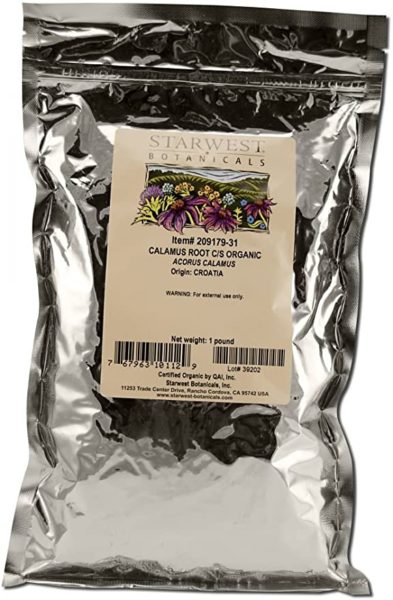
Starwest Botanicals provides an organic-certified calamus root, which comes prepackaged for easy grinding or mixing.
This gives it more versatility, allowing you to shew on it, burn it as an incense or rub it into your skin to reap the benefits. It’s the perfect choice for people making their own calamus-based herbal preparations.
3. HawaiiPharm Calamus Liquid Extract
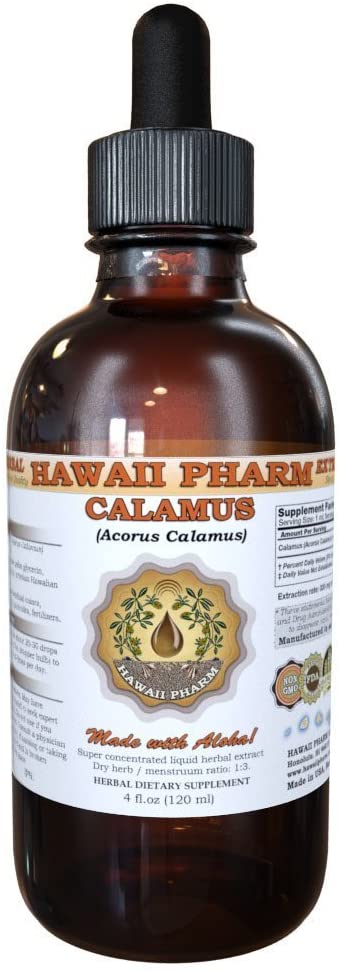
HawaiiPharm calamus root liquid extract is a great choice if you know you’ll be going through a lot of calamus oil. For treating hair or large areas of skin, the four ounce bottle is great. Add to that the highly-pure calamus root extract and you’ve got a great option for liquid calamus that’s both potent and pure.
4. Gya Labs Calamus Essential Oil
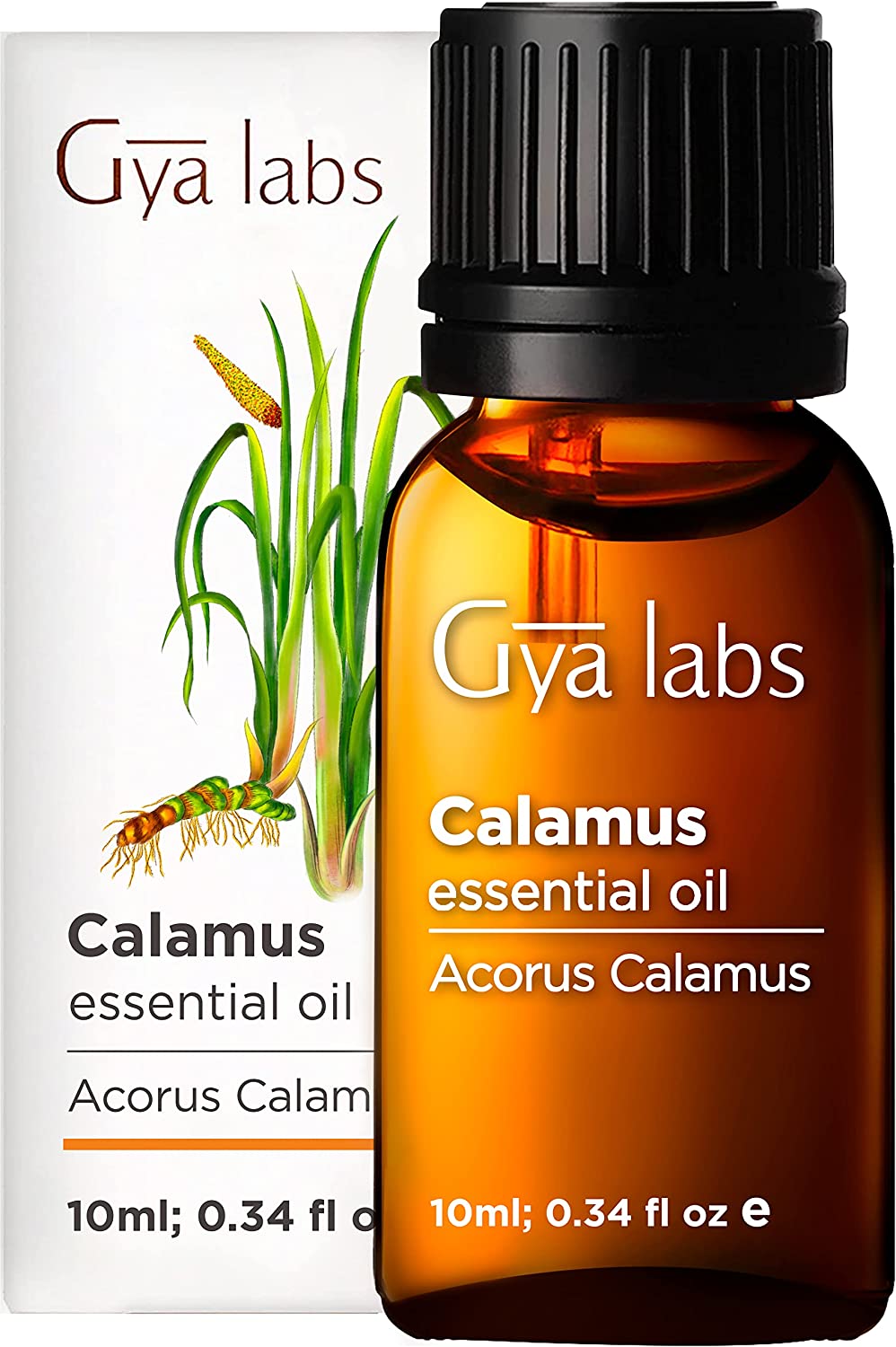
Gya Labs makes a calamus oil that’s specifically formulated for aromatherapy. This essential oil has a spicy, woody scent and is commonly used in aromatherapeutic applications to alleviate stress and anxiety, and improve memory and focus. For calamus-based aromatherapy this essential oil is a great choice.
5. Frontier Co-Op Calamus Root
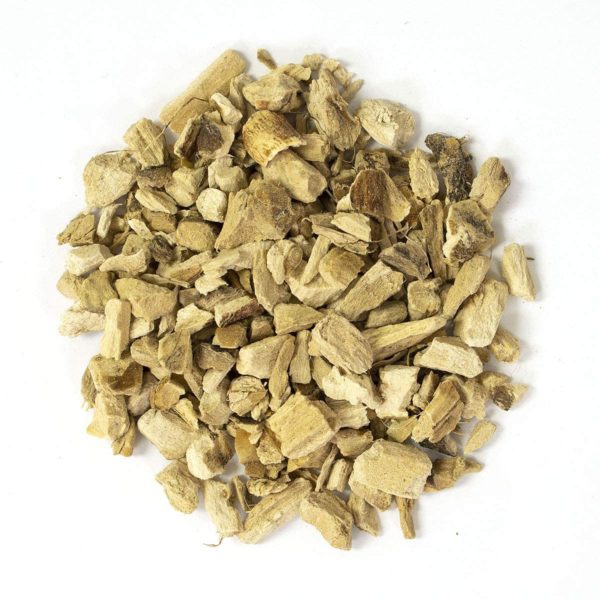
Frontier provides a Kosher-certified calamus root harvested only from the best sources.
The calamus root is pre-cut and sifted. It comes in a 1-pound bag, providing plenty of calamus root for a reasonable asking price.
6. Banyan Botanicals Calamus Powder
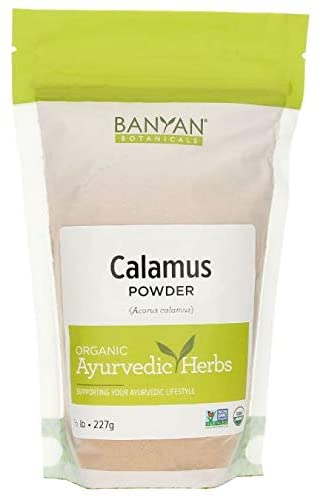
Banyan Botanicals provides a half-pound bag of calamus powder, perfect for removing natural toxins.
The grains are perfectly sized for turning into lotions or for spreading on your skin to get rid of massage oil.
7. Bixa Botanical Calamus Root Powder

Bixa Botanical’s calamus root powder provides all of the health benefits in an easy to reseal jar.
This particular formula is ideal for supporting hair growth and a healthy scalp. The calamus roots are collected using only quality tools and comprised of non-GMO ingredients.
8. Yogi’s Gift Calamus Root
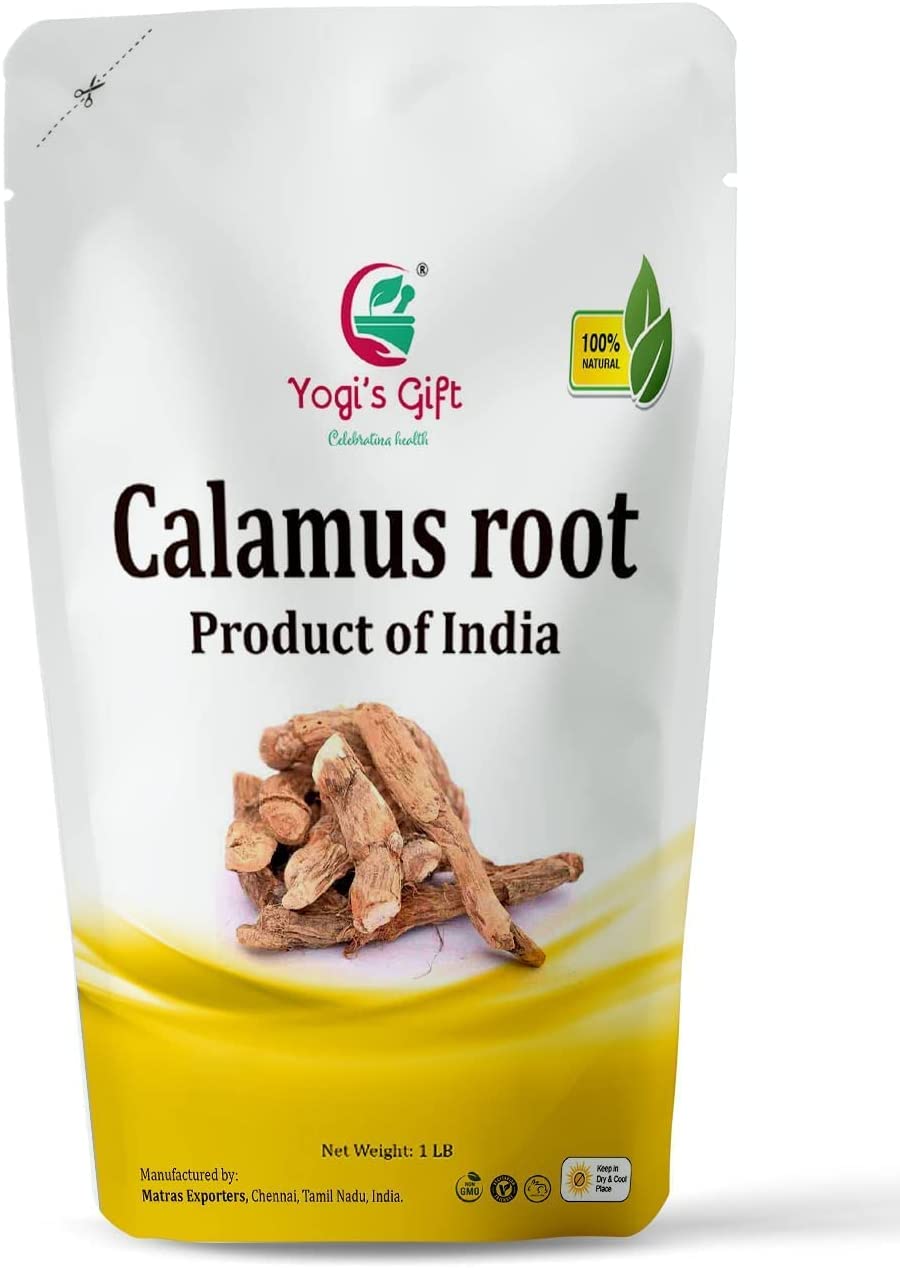
Yogi’s Gift makes a calamus root that’s sourced directly from India and comes in a large one-pound bulk package. It’s a nice choice for the rare user who needs calamus in bulk, but most people would be better-served by an easier-to-use form of calamus.
9. Salvia Calamus Oil

Salvia calamus oil is a perfect therapeutic remedy, and is shipped in an amber bottle that can protect the herb from light oxidation.
The oil is expertly blended into a perfect texture and is an ideal choice for a massage supplement.
10. Smallflower Calamus Root Powder

Smallflower calamus root powder comes in a 4-ounce container that is extremely affordable. This makes it a great budget choice for those who want to try this supplement without breaking the bank.
The loose herbs are ideal for burning or rubbing into the skin.
Category winners
Best calamus overall: Pure Gold Calamus Essential Oil
Pure Gold takes our top overall spot thanks to its 100% pure formulation and the simple-to-use liquid formulation. It’s great for topical application on its own or alongside other compounds, and the amber glass vial protects its biologically active compounds from UV light.
Best calamus for skin care: Hawaii Pharm Calamus
Skin care is one of the most popular uses of calamus, thanks both to its aromatic properties and its anti-inflammatory capabilities. We recommend Hawaii Pharm Calamus for this use case, since its essential oil-based preparation is easy to use on its own or as an additive to lotions and skin balms, and the four ounce size means it will last a lot longer than many competitors.
Best calamus for aromatherapy: Gya Labs Calamus Essential Oil
Gya Labs makes a purified calamus essential oil that’s a great pick for aromatherapy thanks to its bright, woody scent. Calamus aromatherapy is a popular choice for alleviating anxiety and improving memory, and Gya Labs’ aromatherapy-oriented preparation is the perfect fit.
Best organic calamus: Starwest Botanicals Organic Calamus Root
Starwest Botanicals specializes in providing high-quality raw supplement ingredients, and their calamus root is a classic example of this. This raw calamus root is organically certified and is perfect for people looking to incorporate calamus root into their own supplements, extracts, and herbal preparations.
Best calamus for pain and inflammation: Pure Gold Calamus Essential Oil
Calamus is renowned for its anti-inflammatory properties, and can be used as a salve for muscle, joint, or nerve pain. If this is why you’re in the market for a calamus supplement, go with Pure Gold: its simple formulation makes it perfectly suited for applying to painful, inflamed spots on your body.
Best liquid calamus extract: Pure Gold Calamus Essential Oil
Unless you’re making a custom supplement, liquid calamus extract is the right choice for most people. For people in this category, Pure Gold Calamus Essential Oil is our favorite because it is both highly pure and packaged in a way that protects the essential oil from oxidation. Other competitors with larger bottles and non-tinted glass allow air and ultraviolet light to damage the fragile organic compounds in calamus.
Who should buy calamus?
Calamus is used as an external medicine or herbal remedy, instead of something you ingest (though there are a few rare exceptions). This is because some evidence suggesting that ingesting calamus causes several side effects. However, people around the world still use the herb to treat different stomach issues or intestinal problems.
Most Western people will get the majority of their calamus use by applying it to the skin. Specifically, calamus is a good choice if you have several sores or inflamed areas, as the herb can be used to soothe these types of skin conditions. Calamus oil also comes with a pleasant fragrance, so some people like to use it in various aromatherapies. In fact, calamus was once used as a perfume.
Many people recommend calamus if you want to remove massage oil. The powder version of calamus is particularly good at this task, and it can help you clean up much more quickly than if you’re tired of other methods. Some people get a lot of use out of chewing calamus in order to get rid of the smell of tobacco. However, you’ll likely want to spit out the saliva with the calamus juice to prevent accidental ingestion.
Since calamus can increase stomach acid, it may interact with H2 medications and other stomach acid medication. If you are taking any prescription drugs, speak to your doctor before starting a calamus supplement regimen. Pregnant and nursing women should also avoid calamus as it may cause hallucinations.
How we ranked
The first thing we looked at when ranking the best calamus is the delivery method. There are four broad categories of calamus supplements on the market: essential oils (which often come in tinctures), powders, roots (cut and sifted), and capsules.
Calamus capsules are similar to other herbal supplements. However, be aware that these calamus capsules are much harder to find because of the known carcinogenic components included in the plant’s roots. As such, we did not rank these types of products well.
Calamus oils are strictly for external use only and should never be consumed under any circumstances. This can be a little confusing since many other oil supplements come in tinctures to be mixed with food and drink or otherwise absorbed under the tongue (think CBD oil).
However, calamus oil is potentially toxic to the human system if consumed via the digestive tract. Dosing can also be tricky. However, the essential oil provides some of the most powerful benefits, which is why Pure Gold Essential Calamus Oil was our top pick.
Next, we looked at the amount of calamus you got for your purchase. We tried to find several calamus supplements that were more budget-friendly, as well as a few more expensive picks that are ideal if money is no object and you want the best of the best.
Lastly, we selected calamus supplements that were exclusively collected or distilled using top-tier extraction methods. The extraction method used for each supplement can affect its overall purity and potency. You always want to find supplements that are extracted using natural methods, cold-pressed machinery (if possible), and made with organic and non-GMO ingredients only. This is another reason why we ranked Pure Gold Essential Calamus Oil was our top choice.
Benefits
Calamus is good for your overall health. Acorus calamus has a number of health benefits that can be attributed to the makeup of the plant. It has a number of antibiotic, cephalic, circulatory, tranquilizing, anti-rheumatic, nervine, stimulant anti-spasmodic, circulatory, and memory boosting properties (1).
Calamus has a long history of being healthy. Earlier on, the plant was used for the benefits that it provided the lungs and the digestive system. It was seen that the plant cleared up the congestion and phlegm while calming the mind.
Other uses involved the treatment of tinnitus, insomnia, heart palpitations, chronic bronchitis, bronchial asthma, and amnesia.
Calamus is a great digestive aid. Generally, the oil extracted from the root is used that has a very strong fragrance and tastes bitter. The active ingredients are extracted by boiling water.
In certain parts of Europe, calamus was used as a digestive aid because it helped with conditions like dyspepsia, acidity, and heartburn. The root of the plant was used to cure toothache.
In traditional Chinese medicine, the plant was used to treat problems like dizziness, deafness, epilepsy, abdominal pain, dysentery, and diarrhea
Calamus may help with brain health. Ayurvedic medicine used the plant for awareness, circulation to the brain, and to sharpen the memory. However, consuming the plant for internal use is not recommended, although it can be used externally for circulation and sore muscles.
Side effects
Calamus may cause organ damage. Subjects that took the herb for more than one year, even in low dosage, experienced problems like intestinal tumor and organ damage. Animal studies showed that low doses of β-asarone caused organ damage and led to a higher prevalence of intestinal tumors (2, 3).
Calamus may be cancerous. A carcinogenic substance in the plant that is known as β-asarone, has been found to be responsible for these issues. It is recommended that one avoid using calamus due to its toxic content and carcinogenic nature. While it can be used externally, it’s best not to ingest the plant.
Calamus may cause ER visits. One case study reported that the intake of the root of the plant with water caused a visit to the emergency room where the subject had yellow liquid like vomit, was in a diaphoretic state, and had mild leucocytosis.
Calamus may cause hallucinations. Acorus calamus has a number of properties that can deal with a number of physical and psychological disorders. However, it’s advised that pregnant and breastfeeding women avoid it since it can cause hallucinations and convulsions.
Recommended dosage
Some studies suggest that the herb is not suitable for human consumption because of the presence of β-asarone, an active ingredient that is a known carcinogen and is toxic in nature (4).
There are studies that show that the plant’s ethyl acetate extraction does not contain any β-asarone. The extraction can be safely taken within the range of 100 to 200 mg per kilogram of one’s body weight.
It’s important to know that β-asarone is a known pesticide that is famous for its toxic content. The Council of Europe Committee of Experts in Flavoring Substances evaluated the use of the substance in food flavoring and found that the quantity was limited to 0.5mg/kg for beverages with alcohol and 05mg/kg for food.
The council determined that the plant was not safe for human consumption because of the nature of β-asarone. Furthermore, it was established by the council that there is no given intake level of the dose.
FAQ
What are some other names for calamus? Calamus is known by a ton of different names, as it has a long history as an herbal element throughout the world. These names include sweet calamus, sweet cane, sweet cinnamon, sweet flag, sweetgrass, sweet Myrtle, sweet root, acore roseau, Acorus americanus, belle-angelique, flagroot, Gladdon, and Myrtle Sedge.
Where is calamus sourced? Calamus plants that grow in water end up bearing flowers while those that do not stay unflowered. Its natural habitat is alongside streams, ponds, and lakes.
What does the calamus plant look like? Calamus is naturally found as a tall plant that includes leaves which broadly resemble those in the iris family. The plant is usually noticed with the tops of several basal leaves, which spread into a rhizome. Leaf colors are usually yellow and brown, but they also feature pink sheathing at the bases.
When was the calamus plant first used? It’s unclear when exactly people began using calamus for medicinal purposes. The earliest historical mention was 1300 B.C., when a scroll of papyrus spoke of the plant. In those days, the Egyptians used the plant to make various perfumes rather than relying on its medicinal properties.
Greeks and Romans alike both referred to the plant’s reed in scrolls or other documents, and there is historical evidence to suggest that both cultures used it for herbal or perfuming reasons.
The Native Americans were known to use this herb as both a medicinal remedy and for ceremonial purposes, likely because of the same fragrances that attracted other cultures to it over time.
Later, the plant became known to Britain in the 16th century and was grown as an herbal remedy. It was often used by makers of powdered wigs, who utilize the powder both for its dyeing potential and because of the fragrance that killed many bad smells associated with wig-making. It even helped the body odors of those who wore the wigs.
There’s also historical evidence that shows that Dutch children were given the rhizomes of the plant as a type of chewing gum (before modern chewing gum had fully been invented). In other cases, children were given the rhizomes as a type of candy, and tons of liqueurs were flavored with the herb all the way up to the 1960s.
Who should ingest or chew calamus? Calamus is recommended for people who have external skin conditions or who don’t mind using herbal supplements that are primarily absorbed through the skin.
Where does calamus grow? The plant’s native habitat is in India, southern Russia and Siberia, Central Asia, and Europe. In most cases, you can find the plant at the edges of various bodies of water like rivers, small lakes, and ponds. You can also find it in a variety of swamps and other wetland habitats.
Why does calamus have so many other names? Calamus has a ton of different names because many different cultures discovered the medicinal properties of this herb long ago and came up with separate names for the plant. Over time, all of those names have become relatively interchangeable with one another. The most common names are sweet flag, flagroot, and calamus.
Should you ingest calamus powder? Calamus powders are not meant to be ingested whatsoever. Instead, these are best combined with other herbal ingredients and natural elements to form lotions or powder agents that are rubbed into or on the skin. In fact, in its powder form, calamus is an ideal choice for the removal of massage oil and other oily substances (due to its dry nature).
Calamus cut and sifted root can be ground up into powder of its own and used in a similar way as described above. However, some people benefit from chewing on these roots and spitting out the majority of the saliva generated.
However, there is some evidence to suggest that even this small amount of ingestion can be toxic to your system. Above all, carefully read the application methods supported by each product’s manufacturer before making a decision.
What is the best way to use calamus oil? Calamus essential oil is best used as a diffusing element. Use it in conjunction with other essential oils in your favorite diffuser or burn some of the oil is part of a candle or incense setup. This way, you still get the therapeutic benefits of the oil.
Alternatively, you can use the essential oil the way it has been for most of its history – as a rubbing agent.
What does calamus smell like? Most people report calamus powder or oil to smell like a kind of spicy wood. This universally appreciated scent is part of why it’s enjoyed such a long history of uses across the world.
Interestingly, the calamus plant smells a little sweeter when the plant itself is bruised or otherwise crushed. This is likely where all of the “sweet” names got their start in cultures across the world.
Can you plant calamus in your garden? You shouldn’t plant calamus in your garden unless it already incorporates bodies of water. You can use the plant as a special “pond plant” for cultural reasons, as it can help other flowers grow or provide valuable sustenance for animals, insects, and so on.
If you do decide to plant calamus, you’ll find that it’s a pretty low maintenance plant that only requires occasional pending or watering. In most cases, it’ll take care of watering itself (so long as you planted next to an appropriate body of water).
What parts of the calamus plant are most important? In general, the root of a calamus plant is used to make any medicinal products. It is often ground up to make a medicinal powder.
Alternatively, essential oil producers might use multiple parts of the plant and distill the leaves and roots into a single essential oil. However, this varies heavily depending on the exact manufacturing process.
What are some lesser-known health benefits of calamus? Other health benefits of calamus include curing psychological disorders, relief from arthritis, balanced hormone secretion, prevent epileptic fits, prevent hysteric attacks, relieve nervous spasms, improve blood flow, improve metabolism, treat insomnia, mitigate headaches, improve sore throats, and help you sleep.
Can you use calamus as an insecticide? While not common, you can certainly use the calamus plant as an insecticide. There are some chemicals in a calamus that can cause sleepiness or muscle relaxation, and which also have some ancillary effects in insects (i.e. they die).
However, there isn’t a very good way to apply calamus to any other plants as a type of insecticide solution. Even if you were to spread calamus essential oil on other plans to protect them, you might accidentally end up damaging the plants because of the same chemical agents.
If you apply calamus in a very fine powder, it’s pretty capable of killing various ant and flea species. Some gardeners have used it as a sterilizing agent for grain weevils. It’s just that getting enough powder to use it as a wide-scale insecticide is difficult. Ultimately, there are plenty of other more potent and natural insect repellents or solutions you should use instead.
Will calamus interact with any medications? Yes, calamus can interact with medication. You should always be sure to contact your doctor before using any type of herbal supplement, regardless of its exact effects, especially if you are taking any sort of stomach acid medication. Specifically, the chemicals found in calamus might affect various medications for depression or sedative medications. They may also interfere in the absorption and metabolism of these types of medications.
Is calamus legal in the USA? Even though the FDA has forbidden oral calamus, it’s still legal in the USA. However, capsules may take quite a long time to ship to your home. You may also not be able to order it in the US because of these precautions.
Ultimately, remember that there is plenty of evidence to suggest that oral calamus comes with tons of health applications and side effects due to the carcinogenic nature of many of its compounds. We do not recommend taking calamus orally unless you are open to these risks, or if you’ve already been taking calamus orally for a long time with no discernible negative side effects so far.
Can calamus remove massage oil from the skin? Calamus has long been known to help remove excess massage oil on the skin. This helps make a pesky clean up easy.
What are some other applications of calamus? Aside from all the calamus applications mentioned so far, you can mix in the powder with other ingredients to make several topical agents or applications. For instance, you can use the powder to scent various hair lotions and powders, like dry shampoos.
You can also mix calamus powder to make fragrant lotions or herbal bath blends.
Is calamus dangerous to your health? In general, calamus is considered relatedly safe. However, there have been some incidents of calamus causing organ damage that can lead to hospital visits.
Some reports have also shown that calamus may cause hallucinations. While this is not necessarily dangerous, this can lead to dangerous and unsafe situations depending on where you are when the hallucination hits. As such, it’s recommended not to take calamus if you are going to be driving in the near future.
What is the upper safe limit of calamus? According to various sources, 200mg per kilogram of bodyweight seems to be pushing the limits of safety. The upper limit however is a moving line, and people who are new to it may find that this dose causes significant side effects.
Related articles
Recap
Calamus can help with a wide variety of ailments, including digestive disorders, blood circulation, and healing skin issues. It’s been used for thousands of years in Eastern medicine and has a long track record of being safe and effective.
There are several sources that suggest that the recommended daily consumption of the drug is 0.115mg (115µg) a day. It has been seen that usage of beta-asarone for more than two years results in very high in toxicity levels, which makes it unfit for consumption.
For BodyNutrition’s #1 recommended calamus supplement, click here.